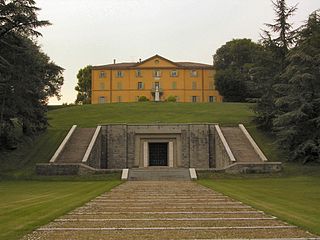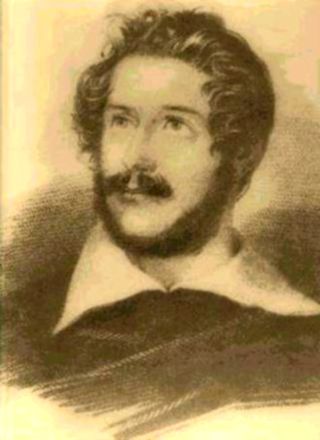Consul was the title of one of the two chief magistrates of the Roman Republic, and subsequently also an important title under the Roman Empire. The title was used in other European city-states through antiquity and the Middle Ages, in particular in the Republics of Genoa and Pisa, then revived in modern states, notably in the First French Republic. The related adjective is consular, from the Latin consularis.

The Roman Republic was a sister republic of the First French Republic. It was proclaimed on 15 February 1798 after Louis-Alexandre Berthier, a general of the French Revolutionary Army under the rule of Napoleon Bonaparte, had occupied the city of Rome on 10 February. It was led by a Directory of five men and comprised territory conquered from the Papal States. Pope Pius VI was exiled to France and died there in August 1799. The Roman Republic immediately took control of the other two former-papal revolutionary administrations, the Tiberina Republic and the Anconine Republic. The Roman Republic proved short-lived, as Neapolitan troops restored the Papal States in October 1799.

The province of Ravenna is a province in the Emilia-Romagna region of Italy. Its capital is the city of Ravenna. As of 2015, it has a population of 391,997 inhabitants over an area of 1,859.44 square kilometres (717.93 sq mi), giving it a population density of 210.81 inhabitants per square kilometre. Its provincial president is Claudio Casadio.

In Italian cuisine, ragù is a meat sauce that is commonly served with pasta. An Italian gastronomic society, Accademia Italiana della Cucina, documented several ragù recipes. The recipes' common characteristics are the presence of meat and the fact that all are sauces for pasta. The most typical is ragù alla bolognese. Other types are ragù alla napoletana, ragù alla barese, ragù alla veneta, and so on.

A sister republic was a republic established by the French First Republic or by local revolutionaries during the French Revolutionary Wars. These republics, though nominally independent, relied heavily on France for protection, making them more akin to autonomous territories rather than independent states. This became particularly evident after the declaration of the French Empire, when several states were annexed, and the remaining turned into monarchies ruled by members of the Bonaparte family.

Sasso Marconi is a town and comune of the Metropolitan City of Bologna in northern Italy, 17 kilometres (11 mi) south-southwest of Bologna.

San Giovanni in Persiceto is a comune (municipality) in the Metropolitan City of Bologna, in the Italian region of Emilia-Romagna.

Medicina is an Italian comune with c. 16,000 inhabitants in the Metropolitan City of Bologna, part of the region of Emilia-Romagna.

San Pietro in Casale is a municipality in the Metropolitan City of Bologna, in Emilia-Romagna, Italy.

The Bolognese is a small dog breed of the bichon type, originating in Italy. The name refers to the northern Italian city of Bologna. It is part of the toy dog group and is considered a companion dog.
Castiglione dei Pepoli is a comune (municipality) in the Metropolitan City of Bologna, Emilia-Romagna, Italy, located about 40 kilometres southwest of Bologna.

The Flags of Napoleonic Italy were the green, white and red tricolour flags and banners in use in Italy during the Napoleonic era, which lasted from 1796 to 1814. During this period, on 7 January 1797, the green, white and red tricolour was officially adopted for the first time as a national flag by a sovereign Italian state, the Cispadane Republic. This event is commemorated by the Tricolour Day.

Bologna is the capital and largest city of the Emilia-Romagna region in Northern Italy. It is the seventh most populous city in Italy, with about 400,000 inhabitants and 150 different nationalities. Its metropolitan area is home to more than 1,000,000 people. It is known as the Fat City for its rich cuisine, and the Red City for its red tiled rooftops and, more recently, its leftist politics. It is also called the Learned City because it is home to the oldest university in the world. It is the only Italian city besides Milan, Rome and Turin to have always been included in the list of the Globalization and World Cities Research Network: specifically, in 1998 it was classified as one of the 100 world cities and, since then, it was the only one to exceed the level of sufficiency or high sufficiency, besides the other three cities previously mentioned, having reached the "Gamma -" level in 2016.

The National Art Gallery of Bologna is a museum in Bologna, Italy. It is located in the former Saint Ignatius Jesuit novitiate of the city's University district, and inside the same building that houses the Academy of Fine Arts. The museum offers a wide collection of Emilian paintings from the 13th to the 18th century and other fundamental works by artists who were in some way related to the city.
The War of the Bucket or the War of the Oaken Bucket was fought in 1325 between the rival city-states of Bologna and Modena. It took place in the region of Emilia-Romagna, in northern Italy. The war was an episode in the over 300-year-long struggle between Guelphs and Ghibellines. Modena won the Battle of Zappolino, the only battle of the war.

Bolognese sauce, known in Italian as ragù alla bolognese or ragù bolognese, is a meat-based sauce in Italian cuisine, typical of the city of Bologna. It is customarily used to dress tagliatelle al ragù and to prepare lasagne alla bolognese.

Mauro Gandolfi was an Italian painter and engraver of the Bolognese School.

Count Carlo Pepoli was an Italian politician and journalist. He was also acclaimed as a poet, his most well-known work being the libretto for Vincenzo Bellini's final opera, I puritani which was given its premiere in Paris in January 1835.

The Tarocco Bolognese is a tarot deck found in Bologna and is used to play tarocchini. It is a 62 card Italian suited deck which influenced the development of the Tarocco Siciliano and the obsolete Minchiate deck.

The Navile is a canal in Emilia-Romagna, northern Italy. It originates from the Reno canal, which owes its name to the Reno River, from which it originates at the Chiusa di Casalecchio di Reno.
















